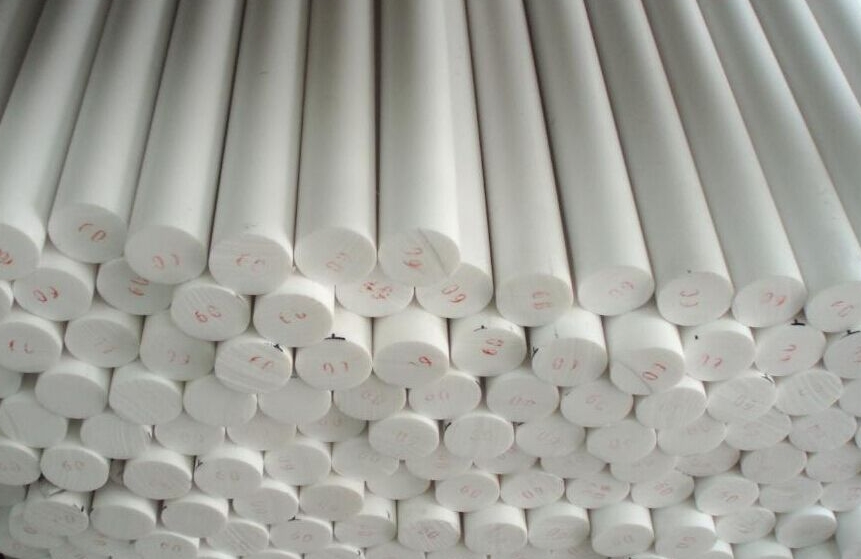- 17
- Nov
PTFE रॉड
PTFE रॉड
PTFE rod is an unfilled PTFE resin suitable for processing various gaskets, seals and lubricating materials that work in corrosive media, as well as electrical insulating parts used at various frequencies. (May contain recycled polytetrafluoroethylene resin) rods formed by molding, paste extrusion or plunger extrusion processes.

विशेषता
The operating temperature range is very wide (from -200 degrees to +260 degrees Celsius).
Basically, it has corrosion resistance to all chemical substances except some fluorides and alkaline metal liquids.
Excellent mechanical properties include aging resistance, especially for bending and swing applications.
Outstanding flame retardancy (in accordance with ASTM-D635 and D470 test procedures, it is designated as a flame retardant material in the air.
Excellent insulation properties (regardless of its frequency and temperature)
The water absorption rate is extremely low, and it has a series of unique properties such as self-lubricity and non-stickiness.
आवेदन
There are two types of PTFE rods: push rods and molded rods. Among the known plastics, PTFE has excellent properties.
Its chemical resistance and dielectric properties can be used at a temperature of -180℃-+260℃, and it has a low friction coefficient. It is mainly suitable for some long products and non-standard mechanical parts: seals/gaskets, ring materials, Wear-resistant plates/seats, insulating parts, anti-corrosion industries, mechanical parts, linings, oil and natural gas, petrochemical industries, chemical industries, instrument and equipment manufacturers, etc.
Application field of PTFE rod
Chemical industry: It can be used as an anti-corrosion material, and can be used to manufacture various anti-corrosion parts, such as pipes, valves, pumps and pipe fittings. For chemical equipment, lining and coating of reactors, distillation towers and anti-corrosion equipment can be made.
Mechanical aspect: It can be used as self-lubricating bearings, piston rings, oil seals and sealing rings, etc. Self-lubrication can reduce the wear and heat of mechanical parts and reduce power consumption.
Electronic appliances: mainly used in the manufacture of various wires and cables, battery electrodes, battery separators, printed circuit boards, etc.
Medical materials: Utilizing its heat-resistant, water-resistant, and non-toxic properties, it can be used as materials for various medical devices and artificial organs. The former include sterile filters, beakers, and artificial heart-lung devices, while the latter include artificial blood vessels, heart, and esophagus. It has been widely used as a sealing material and filling material.
